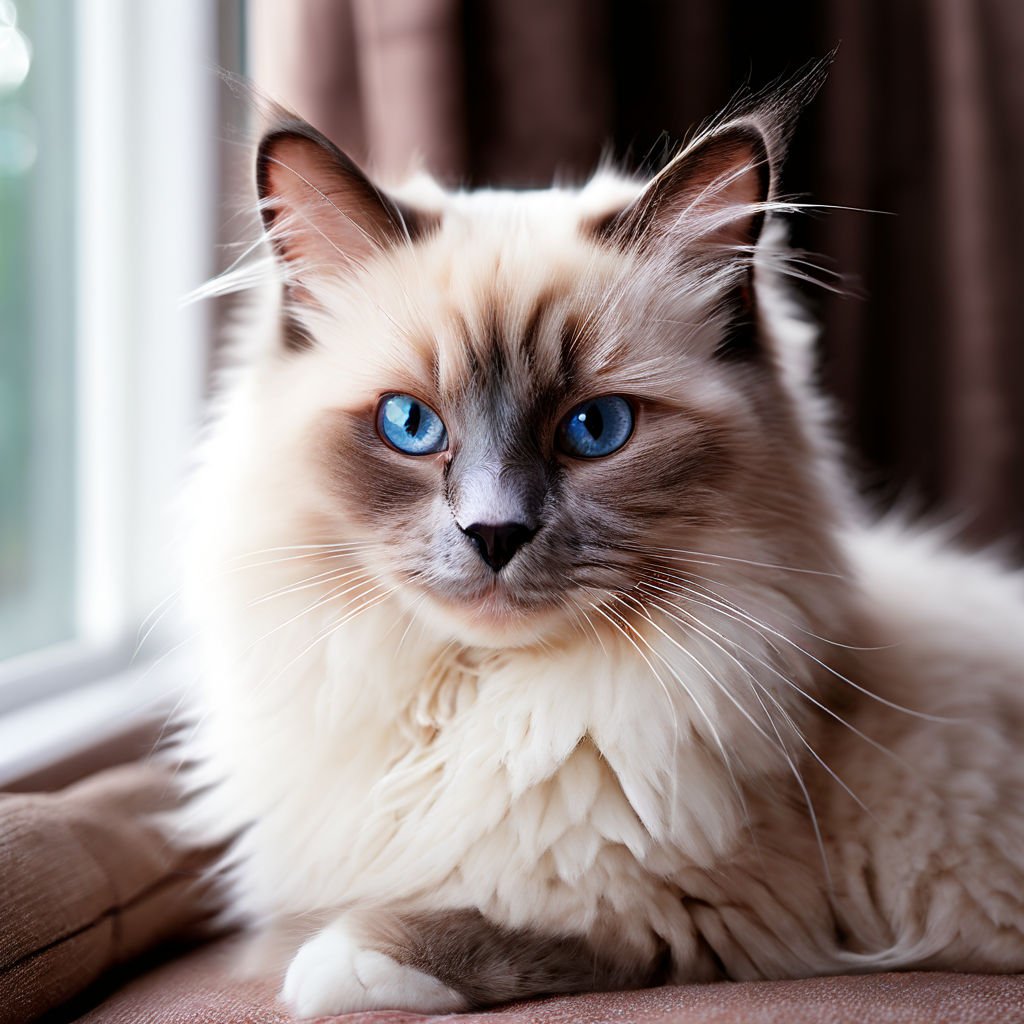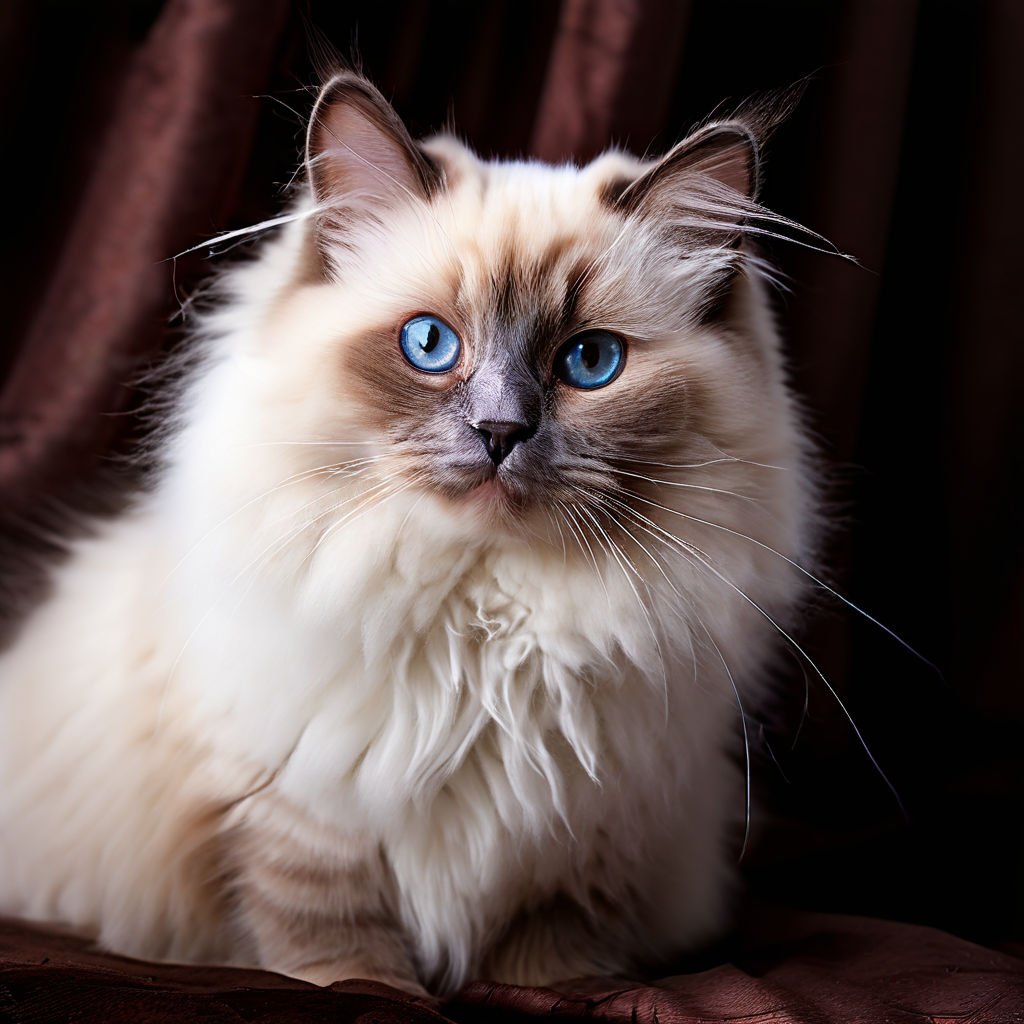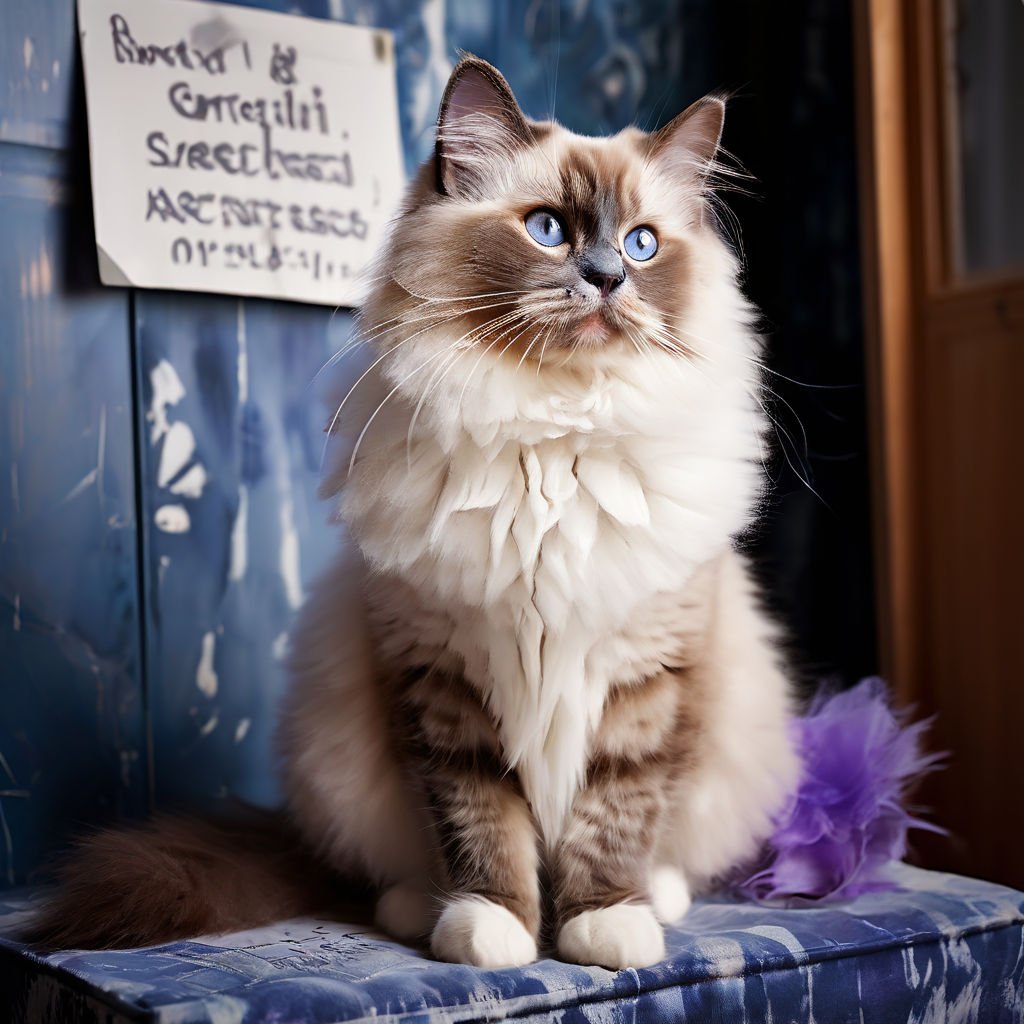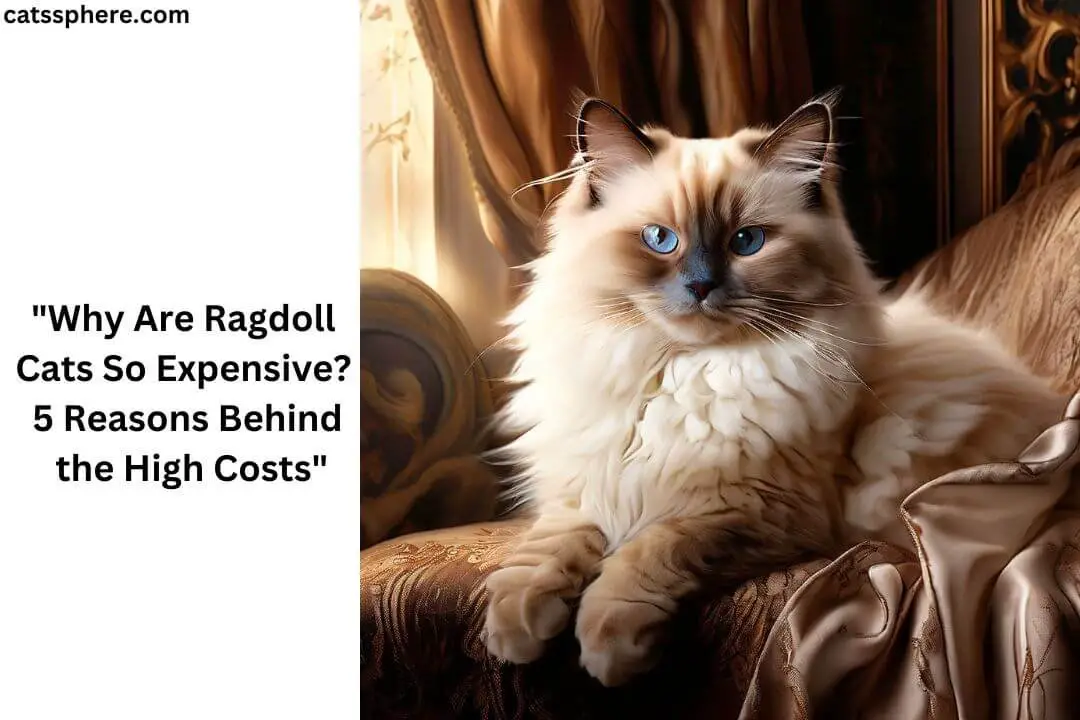Introduction
If you’re a cat lover, you might have heard about Ragdoll cats, famous for their striking blue eyes, silky fur, and relaxed demeanor. But why are Ragdoll cats so expensive? In this article, we’ll delve into the many reasons behind the high cost of these feline beauties, from their origins and unique characteristics to the meticulous breeding practices and ongoing care they require.
History and Origin of Ragdoll Cats
Ragdoll cats are a relatively new breed, developed in the 1960s by Ann Baker, a breeder from Riverside, California. Baker’s goal was to create a cat with a docile temperament and striking appearance. The original Ragdoll was bred from a mix of long-haired breeds, including the Burmese and Persian, leading to the distinct traits we see in Ragdolls today. This breed’s journey from its early development to becoming one of the most sought-after cats involved careful selection and breeding to enhance specific characteristics.
Characteristics of Ragdoll Cats
One look at a Ragdoll cat, and it’s easy to see why they’re so beloved. They are large, muscular cats with semi-long hair that feels soft and silky to the touch. Their most notable feature is their piercing blue eyes, which can range from a pale, icy blue to a deep, rich sapphire. Beyond their looks, Ragdolls are known for their gentle and affectionate personalities. They are often described as “puppy-like” because they enjoy following their owners around and can be trained to fetch and perform simple tricks. Their calm demeanor makes them great companions for families, singles, and the elderly alike.
Why Ragdoll Cats Are Popular

Ragdoll cats have skyrocketed in popularity over the years, and for good reason. Their affectionate nature makes them perfect pets for those seeking a loving companion. They are known to be great with children and other pets, which adds to their appeal for families. Additionally, Ragdolls adapt well to indoor living, making them an excellent choice for apartment dwellers. Their relaxed temperament and need for human interaction often make them ideal for those who spend a lot of time at home.
Breeding Practices and Costs
The high price of Ragdoll cats can be largely attributed to the extensive and ethical breeding practices required to maintain the breed’s standards. Ethical breeders invest significant time and money into maintaining the health and quality of their breeding cats. This includes regular health screenings, genetic testing, and ensuring that breeding cats are kept in optimal conditions. These practices help prevent genetic disorders and ensure that kittens are healthy and well-socialized before they go to their new homes.
Genetic Factors
Genetics play a crucial role in the cost of Ragdoll cats. Responsible breeders conduct thorough health screenings to detect any potential genetic issues. This includes tests for hypertrophic cardiomyopathy (HCM), a common heart condition in cats, and polycystic kidney disease (PKD). By ensuring that breeding cats are free from these and other genetic disorders, breeders help maintain the health and longevity of the breed, which in turn justifies the higher prices.
Health and Medical Expenses
Ragdoll cats, like all purebred animals, can be prone to certain health issues. Regular veterinary check-ups are essential to catch any potential problems early. Vaccinations, dental care, and preventive treatments for parasites are all part of maintaining a Ragdoll’s health. These medical expenses add up over the cat’s lifetime, contributing to the overall cost of ownership.
Registration and Certification
Owning a Ragdoll cat often means dealing with various registration and certification processes. Reputable breeders usually register their cats with recognized associations such as The International Cat Association (TICA) or the Cat Fanciers’ Association (CFA). These registrations provide pedigree papers that verify the cat’s lineage, adding to their value. The costs associated with these certifications and registrations are another factor that increases the price of Ragdoll cats.
Initial Purchase Price
When you first decide to buy a Ragdoll kitten, be prepared for a significant investment. The average cost of a Ragdoll kitten ranges from $800 to $2,500, depending on factors like breeder reputation, lineage, and geographical location. Kittens from champion bloodlines or those with rare color patterns can command even higher prices. This initial cost reflects not just the kitten itself but the breeder’s investment in quality and care.
Maintenance and Upkeep Costs
Beyond the initial purchase price, owning a Ragdoll cat comes with ongoing maintenance and upkeep costs. High-quality cat food, grooming supplies, and regular veterinary care are essential. Ragdolls require a balanced diet to maintain their health and glossy coat, which means premium cat food is a must. Additionally, grooming supplies such as brushes, nail clippers, and specialized shampoos help keep their fur in top condition.
Long-term Ownership Costs
Ragdoll cats have a relatively long lifespan, often living 15 years or more with proper care. This means that long-term ownership costs can add up. Regular veterinary visits, potential medical treatments, and the cost of maintaining a healthy diet all contribute to the overall expense. Additionally, some Ragdolls may require specialized care as they age, which can further increase costs.
Rarity and Demand

Ragdoll cats are not as widely available as some other breeds, contributing to their high cost. The breed’s rarity is a result of selective breeding practices aimed at maintaining specific traits. High demand among cat enthusiasts and limited availability mean that Ragdoll kittens often come with a premium price tag. This scarcity ensures that the breed’s desirable traits are preserved, but it also means higher prices for prospective owners.
Training and Socialization
Training and socializing a Ragdoll cat is an important part of their development. While they are naturally docile and friendly, early socialization helps them adapt to various environments and situations. This process often involves introducing them to different people, pets, and experiences. Training costs can include professional training sessions or classes, which add to the overall expense of owning a Ragdoll.
The Role of Diet in Ragdoll Cat Costs
Feeding a Ragdoll cat a high-quality diet is crucial to maintaining their health and luxurious coat. Premium cat food that meets their nutritional needs can be more expensive than generic brands, but it helps prevent health issues that could lead to costly veterinary bills. Additionally, some Ragdolls may have dietary sensitivities or allergies that require specialized food, further increasing the cost of their care.
Grooming and Hygiene Needs
Ragdoll cats have semi-long fur that requires regular grooming to prevent matting and keep it looking its best. While they are less prone to matting than some other long-haired breeds, a consistent grooming routine is still necessary. This includes brushing their coat several times a week, trimming their nails, and occasionally bathing them with cat-friendly shampoos. Some owners might opt for professional grooming services, which can add to the overall cost of maintaining a Ragdoll cat.
Behavioral Enrichment and Toys
Ragdoll cats are intelligent and playful, requiring mental stimulation and physical activity to stay happy and healthy. Investing in a variety of toys, scratching posts, and interactive playthings is essential for their well-being. While these items can be purchased at various price points, high-quality, durable toys may come at a higher cost but will last longer and provide better enrichment for your Ragdoll.
Insurance for Ragdoll Cats
Given the potential health issues and the significant investment involved in owning a Ragdoll cat, many owners choose to purchase pet insurance. Pet insurance can help cover unexpected veterinary expenses, surgeries, and treatments, providing peace of mind. The cost of pet insurance varies based on the coverage and the cat’s age and health, but it is an important consideration for managing the long-term costs of owning a Ragdoll.
Travel and Boarding Costs
If you travel frequently or plan to take vacations, you’ll need to consider the cost of boarding your Ragdoll cat or hiring a pet sitter. High-quality boarding facilities and professional pet sitters ensure your cat receives the care and attention they need while you’re away. These services can be pricey, especially if you require specialized care for your Ragdoll’s unique needs.
Do Ragdoll Cats Like Water? Myth vs. Reality
Ragdoll vs Siberian Cat: A Comprehensive Comparison
Finding a Reputable Breeder
One of the most crucial steps in purchasing a Ragdoll cat is finding a reputable breeder. A responsible breeder prioritizes the health and well-being of their cats and adheres to ethical breeding practices. They provide proper veterinary care, socialization, and a healthy environment for their cats. Reputable breeders are transparent about their practices and are willing to answer any questions you have about their breeding program. While cats from these breeders may be more expensive, they are typically healthier and better socialized than those from less scrupulous sources.
Adoption and Rescue Options
While buying from a breeder is a common route, there are also options to adopt or rescue Ragdoll cats. Some Ragdoll-specific rescue organizations and shelters occasionally have Ragdolls available for adoption. Adoption fees are generally lower than the cost of purchasing from a breeder, and you have the opportunity to provide a loving home to a cat in need. However, availability can be limited, and these cats may come with unknown health histories that could lead to additional expenses.
The Emotional Value of a Ragdoll Cat

Despite the high financial cost, the emotional value of owning a Ragdoll cat is immeasurable for many owners. These cats are known for their strong bonds with their human companions, providing comfort, companionship, and joy. The unique personality and affectionate nature of Ragdoll cats make them cherished members of the family, enriching their owners’ lives in countless ways.
Conclusion: Why Are Ragdoll Cats So Expensive?
In conclusion, the high cost of Ragdoll cats is a reflection of the extensive care, ethical breeding practices, and unique characteristics that define this beloved breed. From their captivating appearance to their affectionate nature, Ragdoll cats provide a level of companionship and joy that many owners find invaluable. The investment in a Ragdoll cat includes not just the initial purchase price but also the ongoing costs of maintenance, health care, and training. Understanding these factors helps potential owners appreciate the true value of these exquisite cats.
FAQs
What makes Ragdoll cats different from other breeds? Ragdoll cats are known for their docile and affectionate nature, striking blue eyes, and semi-long, silky fur. They have a calm demeanor, making them great companions for families and individuals alike.
How can I find a reputable Ragdoll breeder? To find a reputable breeder, start by checking with recognized cat associations such as TICA or CFA for registered breeders. Look for breeders who prioritize health testing and ethical practices, and consider visiting the breeder’s facility to see how the cats are cared for.
Are Ragdoll cats good with children? Yes, Ragdoll cats are known for their gentle and patient nature, making them excellent companions for children. They tend to enjoy playing and are tolerant of the attention they receive from younger family members.
What is the average lifespan of a Ragdoll cat? Ragdoll cats typically have a lifespan of 15 years or more, provided they receive proper care, a balanced diet, and regular veterinary check-ups.
Do Ragdoll cats require a lot of grooming? While Ragdoll cats do have semi-long fur, their grooming needs are relatively moderate. Regular brushing, typically a few times a week, helps prevent matting and keeps their coat healthy and shiny.

